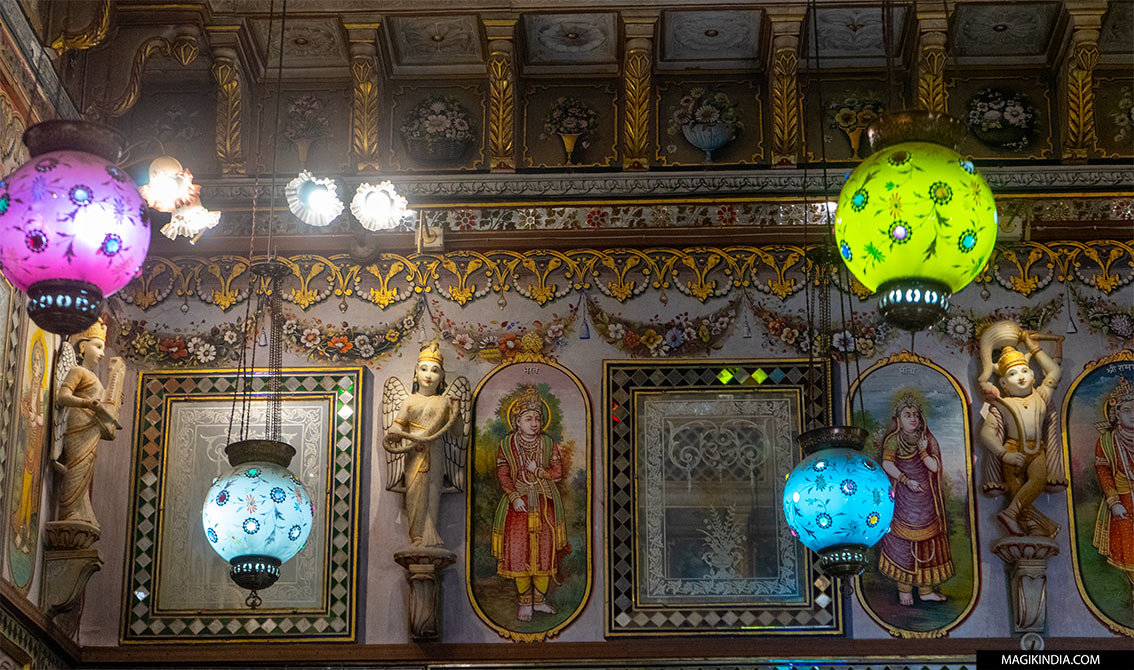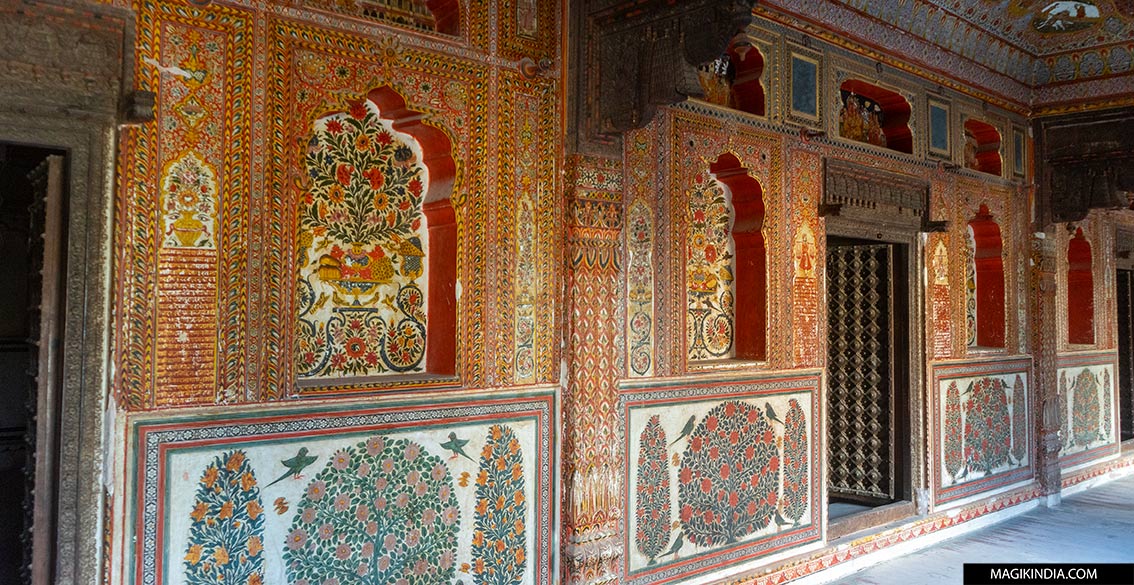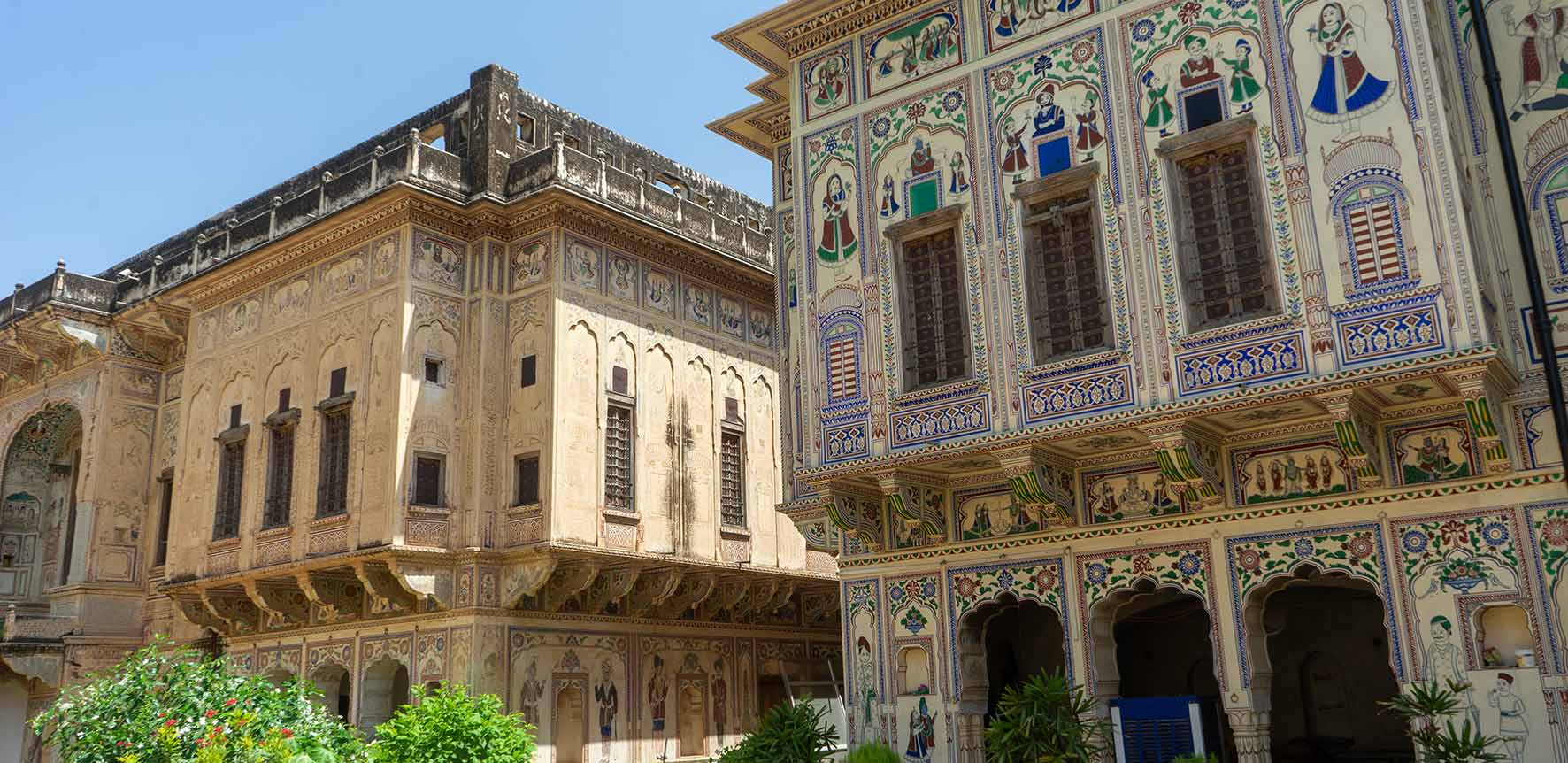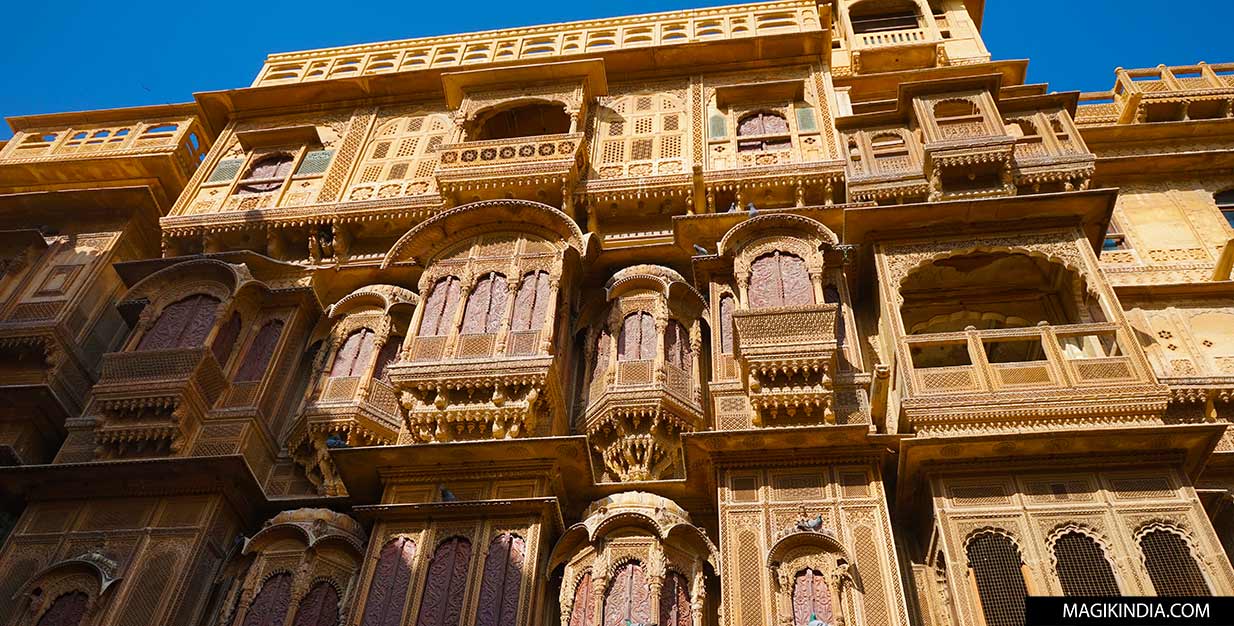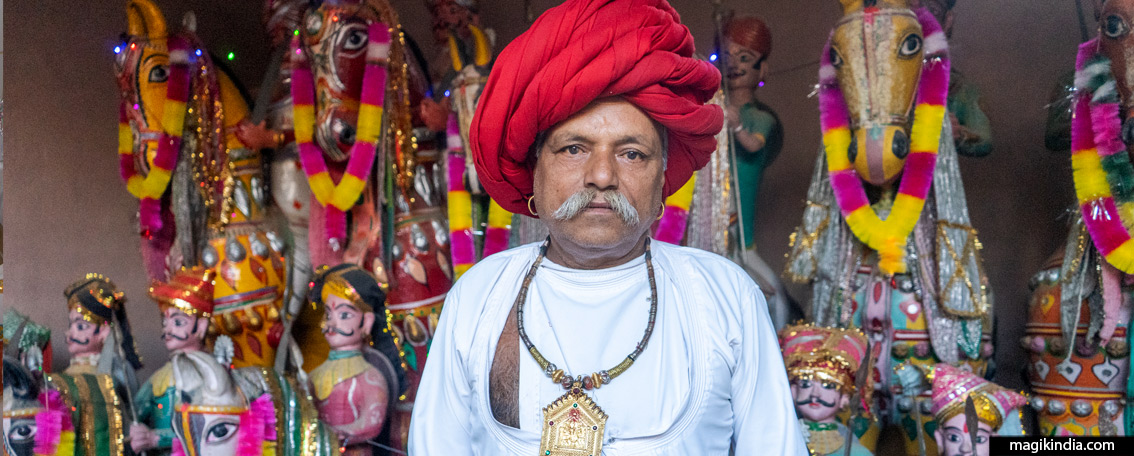
Momaji, the temples of the Rabari Raikas
Since the battle of Sirohi, the close ties that have been established between the Rajputs and the Raïka Rabaris are no longer in doubt. The latter, simple camel breeders at the base, have repeatedly sacrificed their lives fighting alongside the Maharajas. It is therefore not surprising that this pastoral community is highly respected by the Rajputs and that the Rabaris worship Rajput heroes in return. The Momaji warrior temples in the southwest region of Rajasthan are the best examples.
The legend
Momaji or Mamaji are popular temples in the Godwad region of Rajasthan which includes the districts of Jalore, Sirohi and Pali. As is often the case with legends in India, there are multiple versions. The one I’m going to tell you now is the most popular.
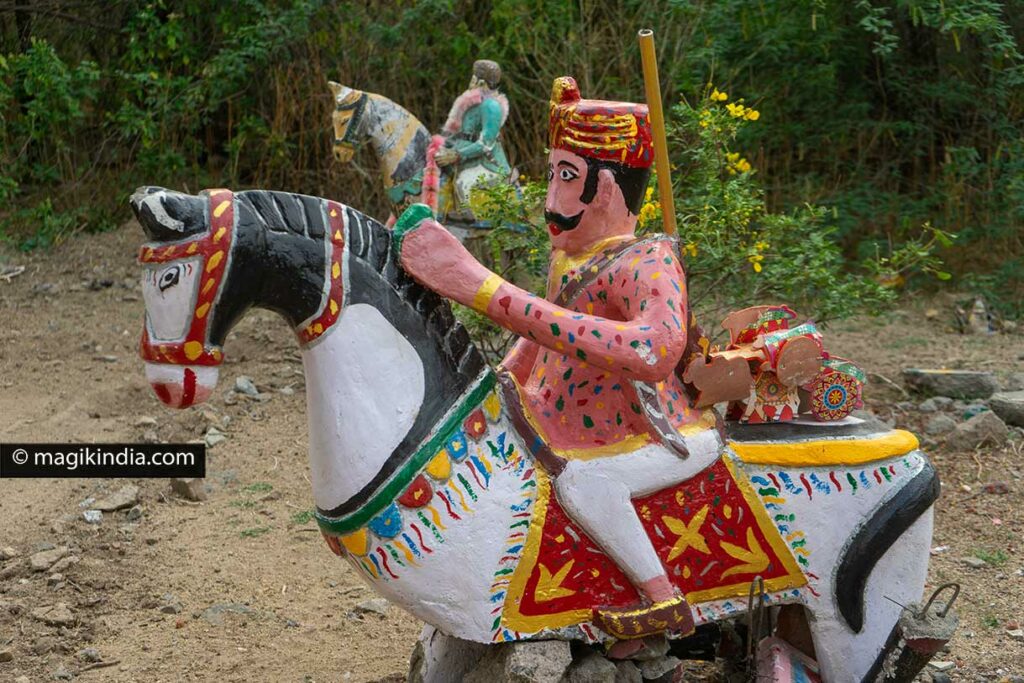
It must first be clarified that Momaji is not associated with a single deity, but with several valiant Rajput warriors who, at different times, fought to protect the Rabari pastoral community. They are known by various names: Dalpat singh, Ganga singh, Dalji, Gongji, Bhoomiya Singh Rathore, Shardul Singh, Dhoneri Veer or Bhursingji to name a few.
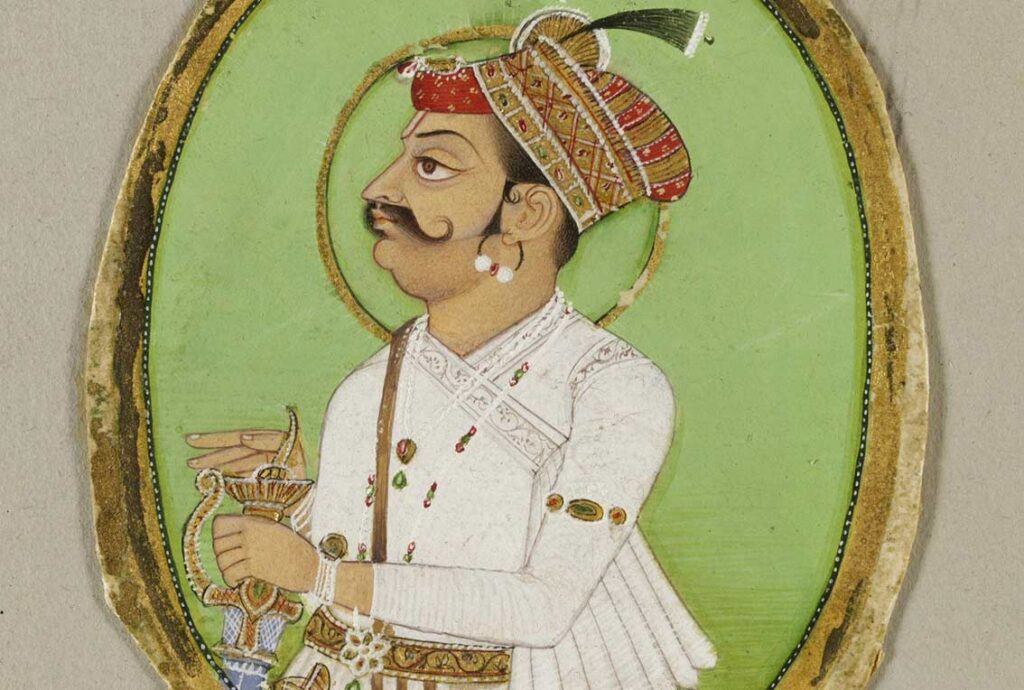
The story begins with the ruler Mandala ji Rathore (one of the 24 sons of King Ranmal of Mandore) who established his stronghold around Bikaner in Rajasthan. Within his clan was the Thakur Hemsingh Mandalawat, who, unable to have an heir, performed severe penances to obtain the grace of Devi Karni Mata (the goddess of the rat temple). She blessed him with two sons: Daulat Singh and Ganga Singh, popularly known as Dolji and Gongji who fought great and victorious battles.
The most famous Momaji temple dedicated to these two warriors is the “Dhoneri Veer Momaji mandir” in Nimblana village (Jalore district).
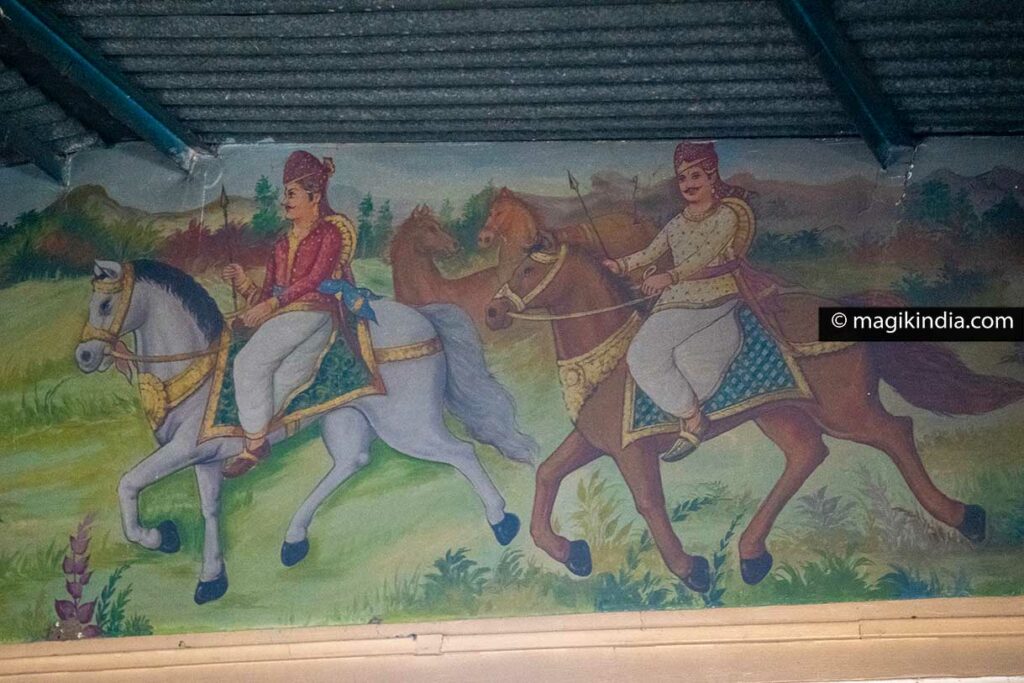
Daulat Singh had a son, named Moma Bhursingji Rathore, born in the village of Dhar in Rajasthan.
Compared to other children, Moma Bhursingji grew up quickly and her strength was exceptional. It is said that he got his strength from the cobra goddess Nagnechi mata, tutelary deity of the Rajput Rathore dynasty.
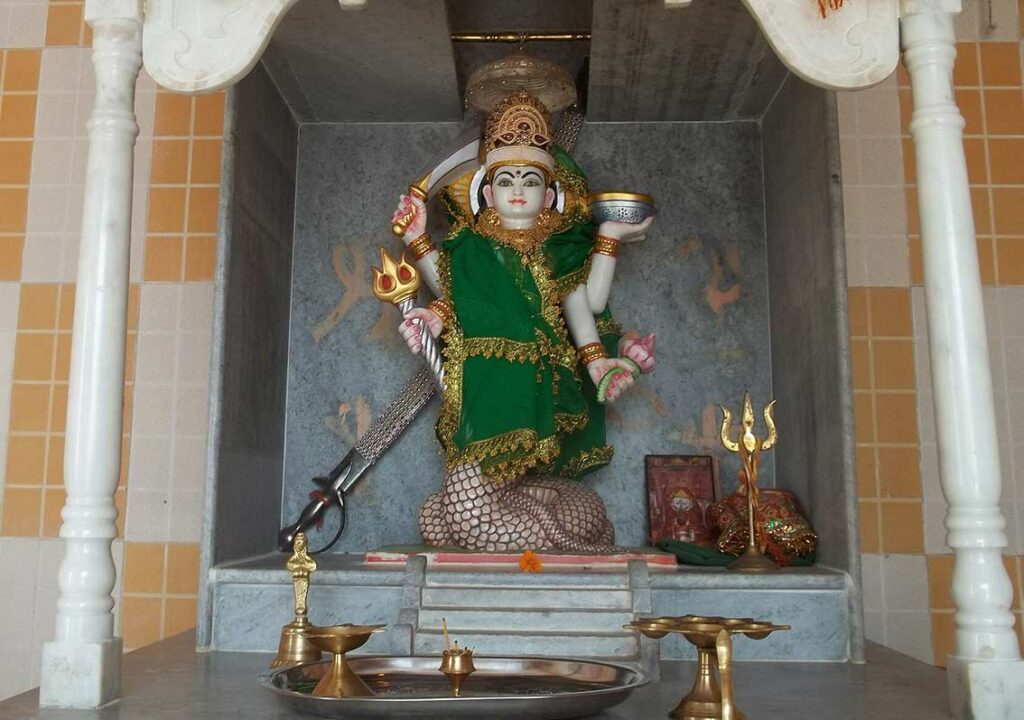
One day, while Moma was practicing his archery skills, one of his arrows broke the jug of a “panihari”, a woman who came to fetch water from a pond. She then uttered bitter words: “Brother, my husband was killed by the Meenas and they stole all my cows! If you are a brave warrior, bring them back and avenge my husband’s death.”
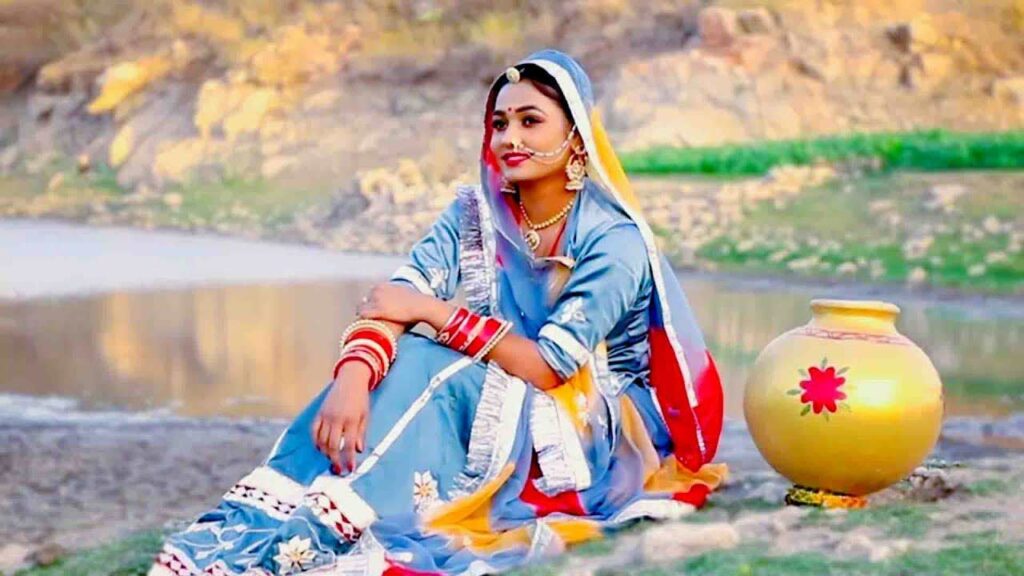
These words were like a stab in the chest for Moma, and during the night he had a dream in which the Panihari, now his sister at heart, wept remembering him, sitting alone in her house: “Oh, my brother, please come and console your lamenting sister, give her hope and courage, come back soon my brother, my Veer, it’s time to prove the worth of Raksha Bandhan bonds.
Hearing her sister’s cries, Moma woke up in the middle of the night. And, after praying to Nagnechi Mata, he took a sharpest sword, jumped on his horse and rode towards Ujjain (Madhya Pradesh) where the thieves had taken refuge.
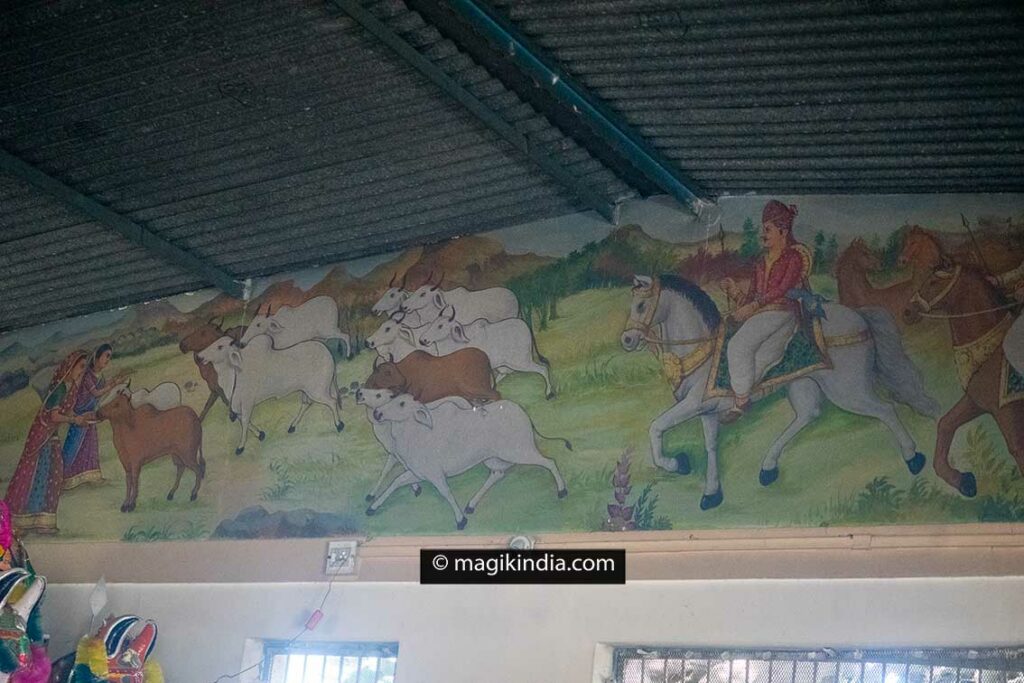
When he entered Ujjain, he began to roar like a lion, asking those who had stolen the cows to come and fight. He shouted that he would fight until his last breath to take them back.
The frightened thieves finally gave in. Bhursingji then freed all the cows and returned them to his sister.
On his return, the son of the panihari touched Moma’s feet and told him that from today onwards the whole world would know him as “MOMAJI”. The latter suddenly took out his sword and slit his own throat. His sister placed Momaji’s head on a tray and made a “kumkum teeka” (red mark on the forehead), with tears in her eyes.

This is how Momaji became immortal and was worshiped by the Rabaris for whom cows are very precious.
Although the stories differ, Momaji is always portrayed as a wise and caring figure who imparts valuable life lessons to the Rabari community. Stories of his martial exploits continue to inspire Rabari youth, emphasizing the importance of courage, strength and unity in the face of challenges.
Momaji temples
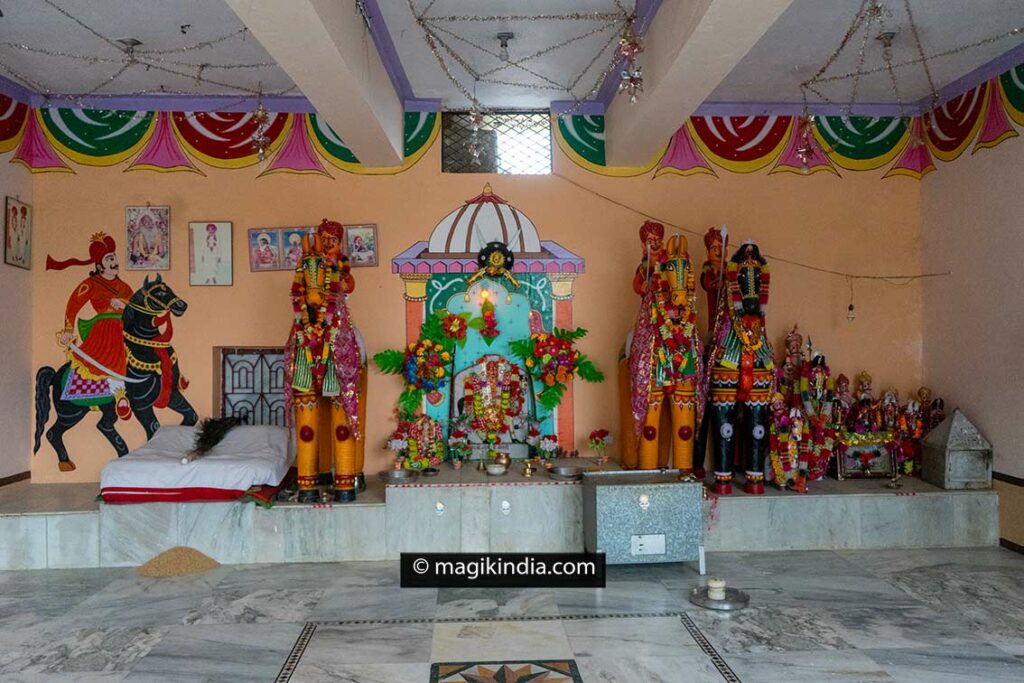
As we have just seen, the temples at Momaji are mainly venerated by the Rabaris, who form an important community in the southwestern region of the state of Rajasthan (Sirohi, Pali and Jalore).

Momaji shrines generally consist of a large, plain rectangular room. The charm of these temples comes mainly from its rows of multicolored horses of all sizes. They represent the offerings made to the temple by the faithful in order to fulfill a wish. Here again we find this notion of a votive horse specific to different communities in India, such as, for example, among the Rathwa people or the adivasis of Poshina in Gujarat.
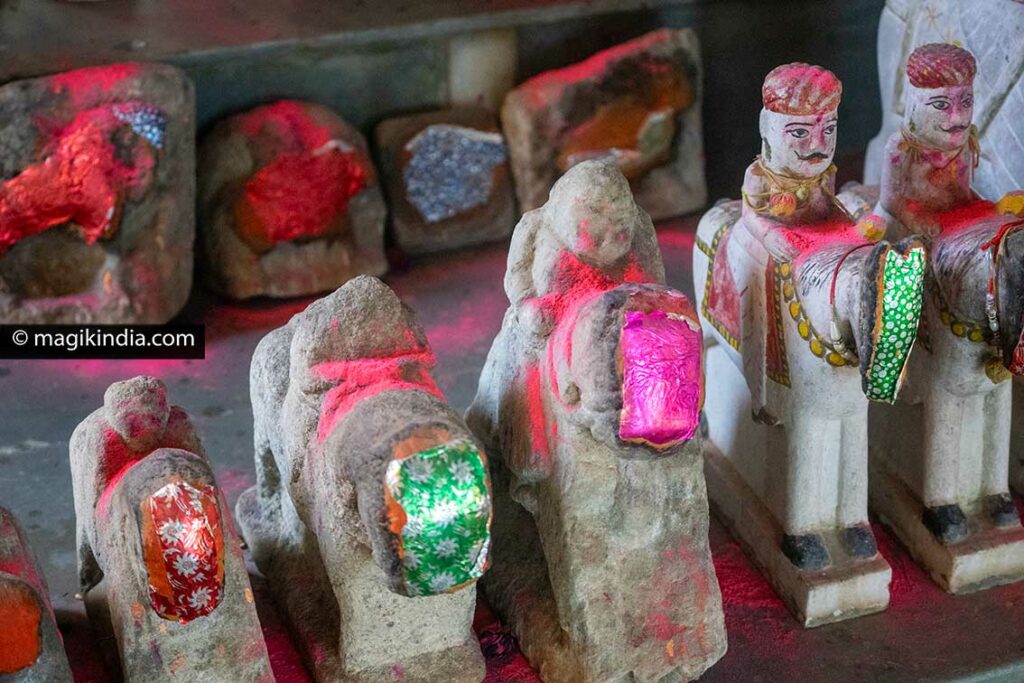
In the center of the temple sit imposing statues on horseback of different Rajput warriors. They are always accompanied by a Shakti, often personified by the Hindu goddess Chamunda.
Chamunda, is a form of Kali, the fierce goddess, who is one of the seven Matrikas (mother goddesses) as well as the 64 Yoginis. The story goes that when Goddess Durga was involved in a war with the demons Munda and Chanda, Kali materialized on Durga’s forehead and killed the asuras. Pleased with Kali, Durga named her Chamunda.
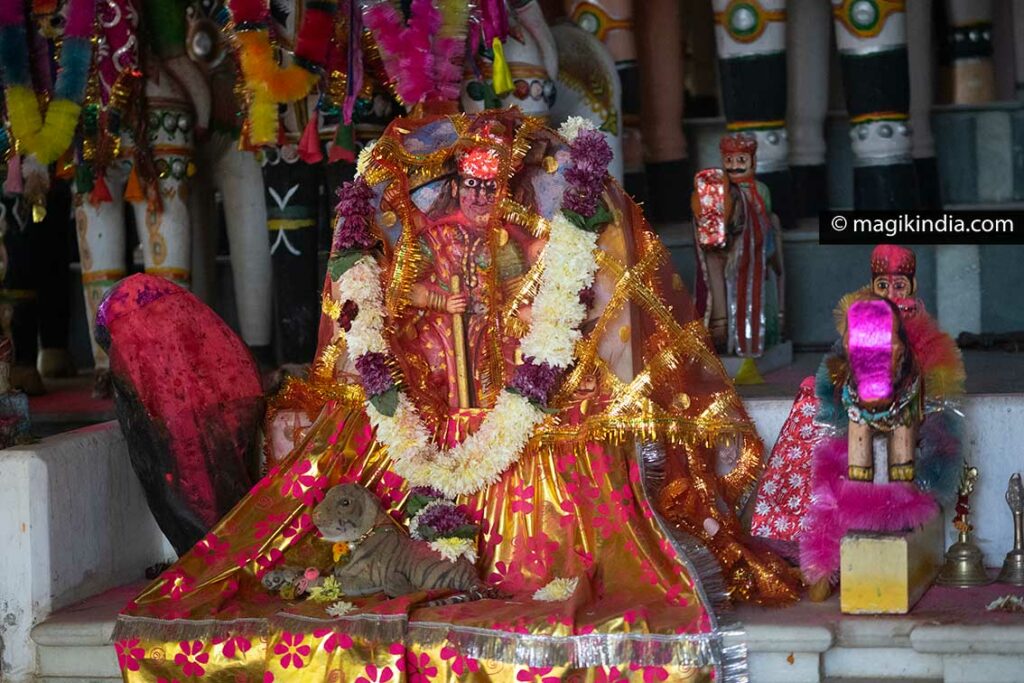
In this temple room, a cushion is placed with a sheaf of peacock feathers called “morpankh”. It is the seat of the “Bhopaji” or “Baa”, a kind of Shaman Rabari. For devotees, the Bhopaji has the power to invoke Goddess Durga. This happens during trances, after performing special rites, in order to connect with the energy of the deity.
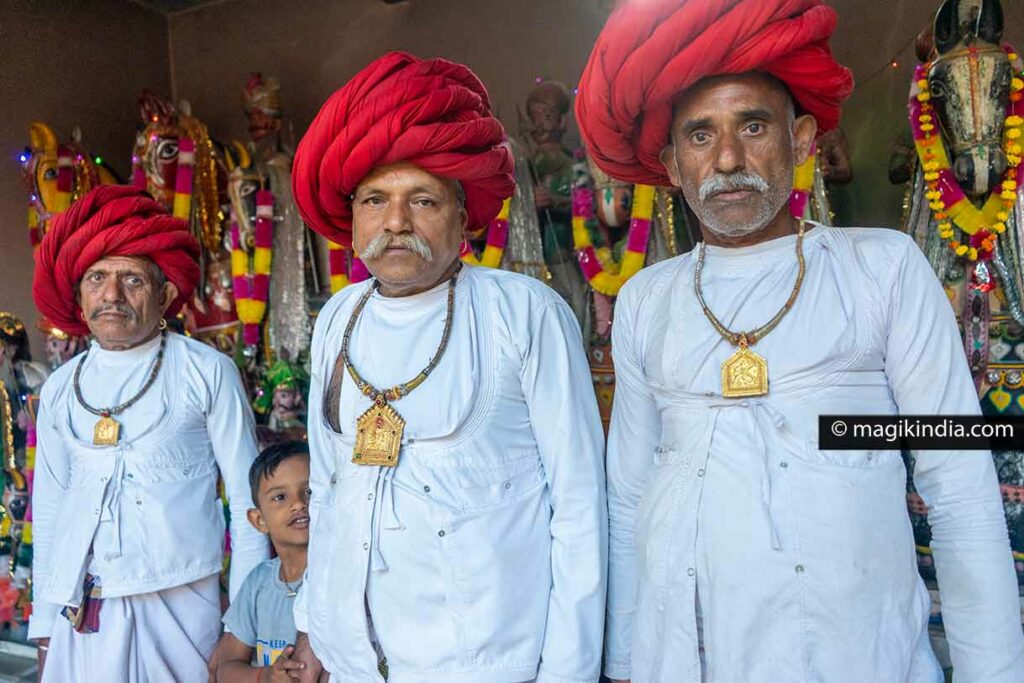
The Bhopaji, possessed by the goddess, can thus provide wise advice to the faithful. At the end of the consultation, the priest hits the heads of the faithful with the morpankh; this is believed to bless them and drive away the evil eye.
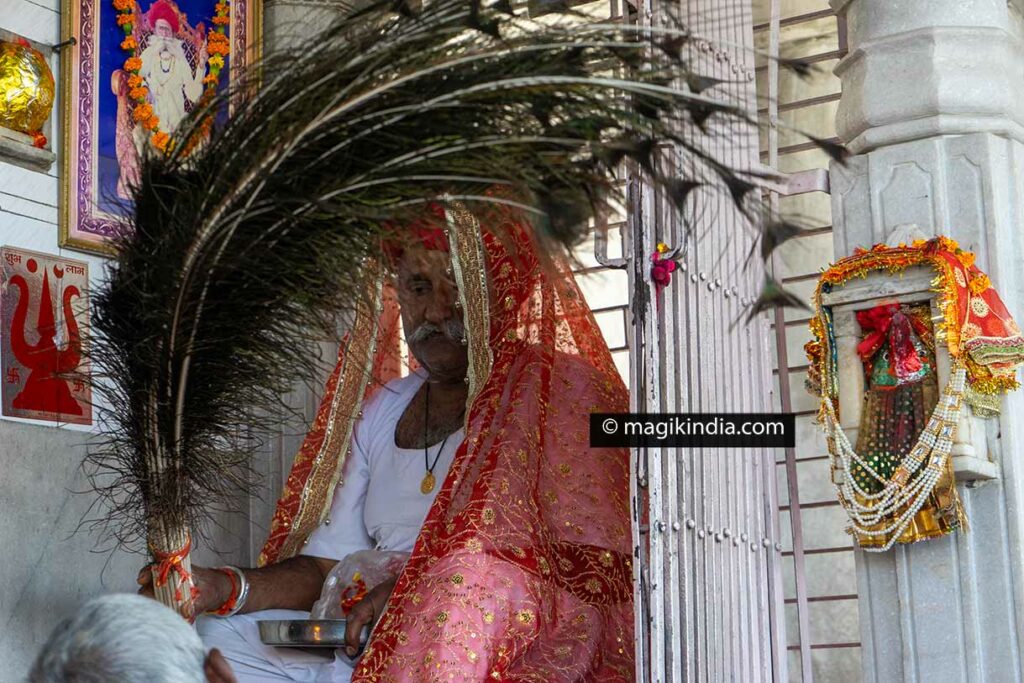
Peacock being the national bird of India, peacock feathers are considered sacred. The bird associated with Lord Krishna, but especially with Kartikeya (better known as Muruga in Tamil Nadu) of which it is the “vahana” or divine vehicle. According to Hinduism, the peacock represents luck, wisdom, prosperity, protection and also our senses. He who controls the peacock and makes it his vehicle therefore controls its senses.
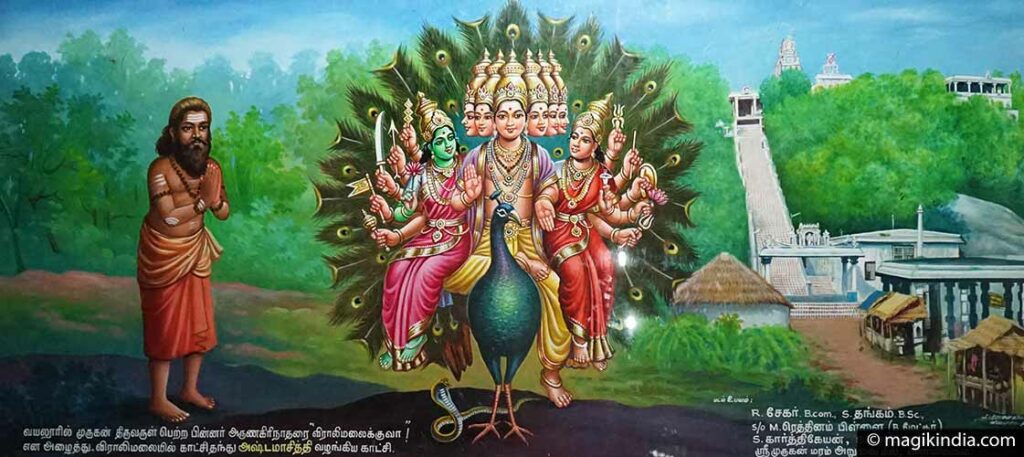
MEET THE RABARI COMMUNITY

